Les plaques de toiture sont un élément essentiel de toute structure, car elles protègent le bâtiment des intempéries et des facteurs environnementaux. Lorsqu'il s'agit de choisir le bon matériau de couverture, les dimensions des tôles de toiture jouent un rôle essentiel pour assurer la durabilité, l'attrait esthétique et la fonctionnalité globale de la structure. Que vous construisiez une maison résidentielle, un complexe industriel ou un espace commercial, il est essentiel de comprendre les différentes dimensions et les différents matériaux des feuilles de toiture pour prendre une décision éclairée.
Cet article se penche sur les dimensions des tôles de toiture, en abordant tous les aspects, depuis leur taille et la composition des matériaux jusqu'aux types disponibles sur le marché et à leurs diverses applications. Nous donnerons un aperçu détaillé des tôles ondulées, des modèles spécifiques de poudres métalliques et de bien d'autres choses encore. Embarquons pour ce voyage dans le monde des tôles de toiture.
Vue d'ensemble
Les tôles de toiture varient en dimensions et chaque type offre des avantages distincts. Par exemple, les tôles ondulées, souvent préférées pour un usage industriel, diffèrent en épaisseur et en longueur des tôles de toiture résidentielle. En général, la bonne dimension améliore la capacité de charge de la tôle, la facilité d'installation et la résistance générale aux intempéries.
Dans ce guide, nous aborderons plusieurs aspects :
- Guide des tôles ondulées
- Différents types et modèles de plaques de toiture
- Les principaux composants et leurs fonctions
- Vitesse et efficacité des machines dans l'industrie manufacturière
- Installation, fonctionnement et entretien
- Recommandations de fournisseurs et fourchettes de prix

Guide actuel des tôles ondulées
Les tôles ondulées sont l'un des matériaux de couverture les plus utilisés. Elles sont réputées pour leur légèreté, leur durabilité et leur résistance aux conditions climatiques extrêmes. Leur structure ondulée renforce leur solidité, ce qui en fait un choix de premier ordre pour les projets résidentiels et commerciaux.
Dimensions des tôles ondulées
Les plaques ondulées sont disponibles en différentes dimensions pour répondre aux différents besoins de construction. En voici un aperçu :
| Matériau | Épaisseur de la feuille (mm) | Largeur de la feuille (mm) | Longueur de la feuille (mm) |
|---|---|---|---|
| Fer galvanisé | 0,4 à 1,2 | 600 à 1050 | 1800 à 6000 |
| Aluminium-galvanisé | 0,3 à 0,8 | 750 à 1200 | 1500 à 6100 |
| Polycarbonate | 0,8 à 1,5 | 600 à 980 | 1800 à 7000 |
Types de plaques de toiture en fonction de leurs dimensions
Les plaques de toiture se déclinent en différents matériaux et modèles. Chaque type a ses propres dimensions, qui ont une incidence non seulement sur l'esthétique, mais aussi sur la fonctionnalité et la durabilité de la toiture. Passons en revue les types les plus courants :
- Tôles de couverture métalliques - Connues pour leur durabilité et leur résistance, les tôles sont souvent utilisées dans les structures industrielles et résidentielles. Les dimensions typiques des tôles de couverture sont comprises entre 0,5 et 1,2 mm d'épaisseur et 800 à 1250 mm de largeur.
- Plaques de toiture en plastique - Ces plaques sont légères, faciles à installer et parfaites pour les petits bâtiments résidentiels ou agricoles. Elles ont généralement une épaisseur de 0,7 à 1,5 mm et une largeur de 700 à 1000 mm.
- Feuilles d'asphalte pour toiture - Ils sont abordables, durables et offrent de bonnes propriétés d'isolation. Ils mesurent généralement environ 3 mm d'épaisseur et ont une largeur comprise entre 1000 et 1200 mm.
- Plaques de toiture en fibre de verre - Ces feuilles sont résistantes à la corrosion et conviennent parfaitement aux industries chimiques ou aux environnements fortement exposés à l'eau salée. L'épaisseur des plaques de fibre de verre varie entre 0,8 et 2,0 mm, avec une largeur d'environ 600 à 1100 mm.
- Plaques de toiture en polycarbonate - Ils sont transparents et laissent passer la lumière naturelle, ce qui les rend idéaux pour les serres ou les terrasses. Leurs dimensions varient généralement entre 0,8 et 1,5 mm d'épaisseur et 600 à 1200 mm de largeur.
Tableau des types et dimensions des plaques de toiture
Voici un aperçu des différents matériaux de couverture et de leurs dimensions typiques :
| Type de matériau | Épaisseur (mm) | Largeur (mm) | Longueur (mm) |
|---|---|---|---|
| Métal (aluminium, acier) | 0.4 – 1.2 | 600 – 1250 | 1800 – 6000 |
| Plastique (PVC, acrylique) | 0.7 – 1.5 | 700 – 1000 | 1800 – 7000 |
| Fibre de verre | 0.8 – 2.0 | 600 – 1100 | 1500 – 6500 |
| Asphalte | 3.0 | 1000 – 1200 | 1800 – 5000 |
| Polycarbonate | 0.8 – 1.5 | 600 – 1200 | 2000 – 7000 |
-
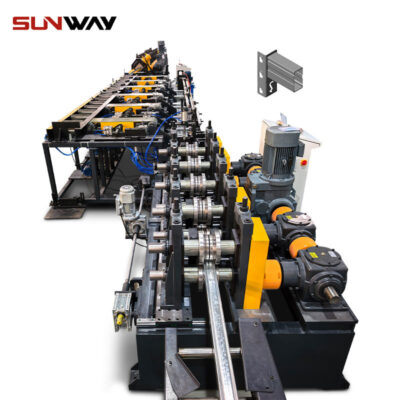 Storage Rack Shelf Box Panel Making Machine Steel Storage Rack System Box Beam Roll Forming Line
Storage Rack Shelf Box Panel Making Machine Steel Storage Rack System Box Beam Roll Forming Line -
 Machine de formage de bornes d'extrémité de glissières de sécurité pour autoroutes
Machine de formage de bornes d'extrémité de glissières de sécurité pour autoroutes -
 Profileuse pour poteaux d'autoroute U/C
Profileuse pour poteaux d'autoroute U/C -
 Machine de formage de rouleaux de glissières de sécurité à 2 vagues pour autoroutes
Machine de formage de rouleaux de glissières de sécurité à 2 vagues pour autoroutes -
 Machine de formage de rouleaux de glissières de sécurité à 3 vagues
Machine de formage de rouleaux de glissières de sécurité à 3 vagues -
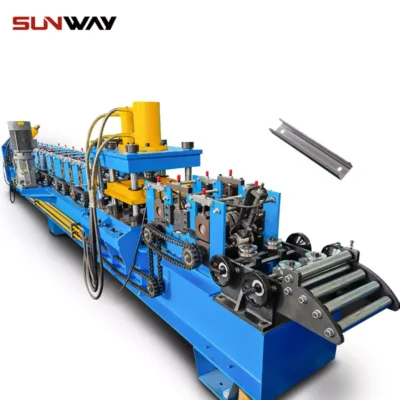 Section C renforçant la machine de formage de rouleaux de poteau de support de stockage Omega
Section C renforçant la machine de formage de rouleaux de poteau de support de stockage Omega -
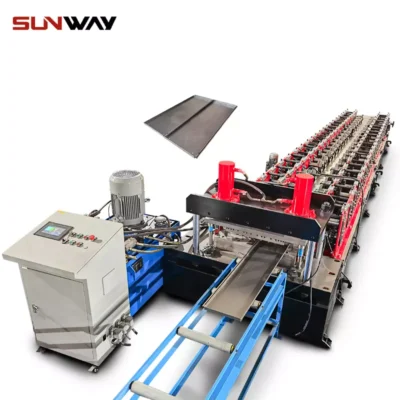 Plaque de boîte en acier faisant la machine de formage de rouleaux
Plaque de boîte en acier faisant la machine de formage de rouleaux -
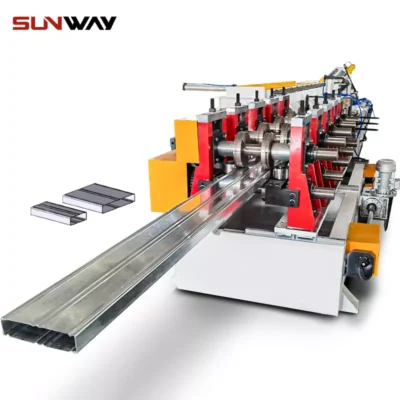 Petit pain en acier de poutre en caisson formant la machine pour la colonne d'étagère
Petit pain en acier de poutre en caisson formant la machine pour la colonne d'étagère -
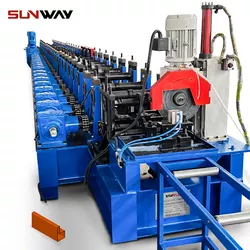 Pallet Racking Step Beam P Beam Roll Machine de formage
Pallet Racking Step Beam P Beam Roll Machine de formage
Processus de travail des dimensions des plaques de toiture
La dimensions des tôles de toiture ne sont pas de simples chiffres arbitraires - elles sont soigneusement conçues grâce à un processus de fabrication qui fait appel à la précision, au savoir-faire technique et à la machinerie. Comprendre le processus de fabrication des plaques de toiture vous aidera à mieux comprendre l'importance de certaines dimensions.
Formage de tôles
L'une des méthodes de fabrication les plus courantes est le profilage. Ce procédé consiste à faire passer des tôles plates dans une série de rouleaux qui leur donnent progressivement la forme et la taille souhaitées. Ce procédé permet aux fabricants de produire de grandes quantités de tôles de toiture avec une qualité constante.
- Sélection des matériaux - Différents métaux tels que l'aluminium, l'acier ou les alliages de zinc sont sélectionnés en fonction des caractéristiques requises telles que la résistance à la corrosion, la durabilité et l'esthétique.
- Découpe de feuilles - Sur la base des spécifications du client, les tôles sont découpées en longueurs spécifiques. Cette étape permet de s'assurer que les tôles ont les dimensions appropriées.
- Forme rouleau - Les feuilles prédécoupées passent dans des rouleaux qui les plient pour obtenir le profil souhaité, par exemple ondulé ou trapézoïdal.
- Revêtement - Pour une plus grande durabilité, de nombreuses tôles de toiture sont recouvertes d'une couche de zinc, d'aluminium ou de peinture afin de les protéger contre la rouille et les dommages causés par les UV.
Principaux composants et fonctions des plaques de toiture
Pour que les plaques de toiture fonctionnent de manière optimale, elles s'appuient sur plusieurs éléments clés. En voici un aperçu :
| Composant | Fonction |
|---|---|
| Tôle | Forme la structure de base, ce qui lui confère résistance et durabilité. |
| Couche de revêtement | Protège le métal de la corrosion, de l'oxydation et des dommages causés par les intempéries. |
| Fixations | Fixer les feuilles à la structure et maintenir la stabilité. |
| Sous-couche | Agit comme une barrière supplémentaire contre les infiltrations d'eau. |
| Scellant | Assure l'étanchéité entre les feuilles qui se chevauchent. |
Vitesse et efficacité des machines dans la fabrication de plaques de toiture
Pour maintenir l'efficacité de la production de feuilles de toiture, la vitesse de la machine et l'efficacité globale sont des facteurs cruciaux. Ce tableau illustre les vitesses générales et les capacités des équipements modernes de fabrication de plaques de toiture :
| Type de machine | Vitesse de production (m/min) | Efficacité (%) |
|---|---|---|
| Rouleau formant la machine | 10 – 30 | 85 – 95 |
| Machine à couper les feuilles | 15 – 35 | 90 – 98 |
| Machine d'enduction | 8 – 25 | 80 – 90 |
| Machine de poinçonnage et d'emboutissage | 12 – 40 | 75 – 85 |
Paramètres mécaniques personnalisés pour les plaques de toiture
Dans certains cas, les plaques de toiture doivent répondre à des critères de conception uniques. La personnalisation est fréquente dans les projets architecturaux haut de gamme ou les applications industrielles. Le tableau suivant énumère quelques paramètres mécaniques courants qui peuvent être personnalisés :
| Paramètres | Description |
|---|---|
| Épaisseur de la feuille | Peut être personnalisé entre 0,3 mm et 2,0 mm en fonction des exigences de la charge. |
| Longueur de la feuille | Varie en fonction des besoins du projet, jusqu'à 12 mètres pour les projets de grande envergure. |
| Type de revêtement | Les options comprennent la galvanisation, la peinture polyester ou le revêtement PVC. |
| Forme du profil | Des profils ondulés aux profils trapézoïdaux ou personnalisés. |
Applications et utilisations des différentes plaques de toiture
La polyvalence des tôles de toiture leur permet de répondre à de nombreuses applications. Voici quelques-unes des utilisations les plus courantes :
| Application | Ideal Roofing Sheet |
|---|---|
| Toiture résidentielle | Asphalte, plaques métalliques et polycarbonate |
| Bâtiments industriels | Tôles ondulées, fibre de verre |
| Serres | Plaques en polycarbonate pour une transmission de la lumière naturelle |
| Espaces commerciaux | Tôles métalliques pour la durabilité et l'esthétique |
| Bâtiments agricoles | Feuilles en plastique pour faciliter l'installation et réduire les coûts |
Installation, fonctionnement et entretien des plaques de toiture
Une installation et un entretien corrects sont essentiels pour garantir la longévité et les performances de vos plaques de toiture. Vous trouverez ci-dessous un guide général :
| Aspect | Meilleures pratiques |
|---|---|
| Installation | Aligner correctement les feuilles, utiliser des fixations de qualité, assurer l'étanchéité. |
| Fonctionnement | Évitez de marcher directement sur les feuilles ; répartissez votre poids uniformément. |
| Maintenance | Contrôles réguliers de la rouille, réapplication du revêtement si nécessaire. |
Fournisseurs et fourchette de prix pour les plaques de toiture
Voici une liste de fournisseurs réputés et une fourchette de prix générale pour différents types de plaques de toiture :
| Fournisseur | Fourchette de prix (par mètre carré) | Région |
|---|---|---|
| ABC Metals | $10 – $20 | ÉTATS-UNIS |
| Toiture globale | $8 – $18 | L'Europe |
| Acier BlueScope | $15 – $30 | Australie |
| Tata Steel | $12 – $25 | Asie |
| Solutions PolyRoof | $7 – $15 | Mondial |
Comment choisir un fournisseur de plaques de toiture
Lors de la sélection d'un fournisseur, il convient de tenir compte des éléments suivants :
| Critères | Considération |
|---|---|
| Gamme de produits | Recherchez des fournisseurs offrant plusieurs options de matériaux. |
| Vitesse de livraison | Vérifiez si le fournisseur peut respecter le calendrier de votre projet. |
| Tarification | Comparez les prix, mais équilibrez le coût et la qualité. |
| Avis des clients | Évaluer le retour d'information d'autres clients pour juger de la fiabilité. |
Avantages et inconvénients des différentes options de tôle de couverture
Les différents matériaux de couverture présentent des avantages et des inconvénients qui leur sont propres. Voici une comparaison :
| Matériau | Avantages | Inconvénients |
|---|---|---|
| Feuilles de métal | Durable, résistant aux intempéries, longue durée de vie. | Peut être bruyant en cas de pluie ; sujet à la rouille en l'absence d'un revêtement approprié. |
| Feuilles en plastique | Léger, abordable, facile à installer. | Moins durable, moins esthétique. |
| Feuilles de fibre de verre | Résistant à la corrosion, idéal pour une utilisation industrielle. | Peut devenir cassant avec le temps. |
| Feuilles d'asphalte | Abordable, bonnes propriétés d'isolation. | Durée de vie plus courte que celle du métal. |
| Feuilles de polycarbonate | Transparent, idéal pour la lumière naturelle. | Plus coûteux, il peut jaunir avec le temps. |
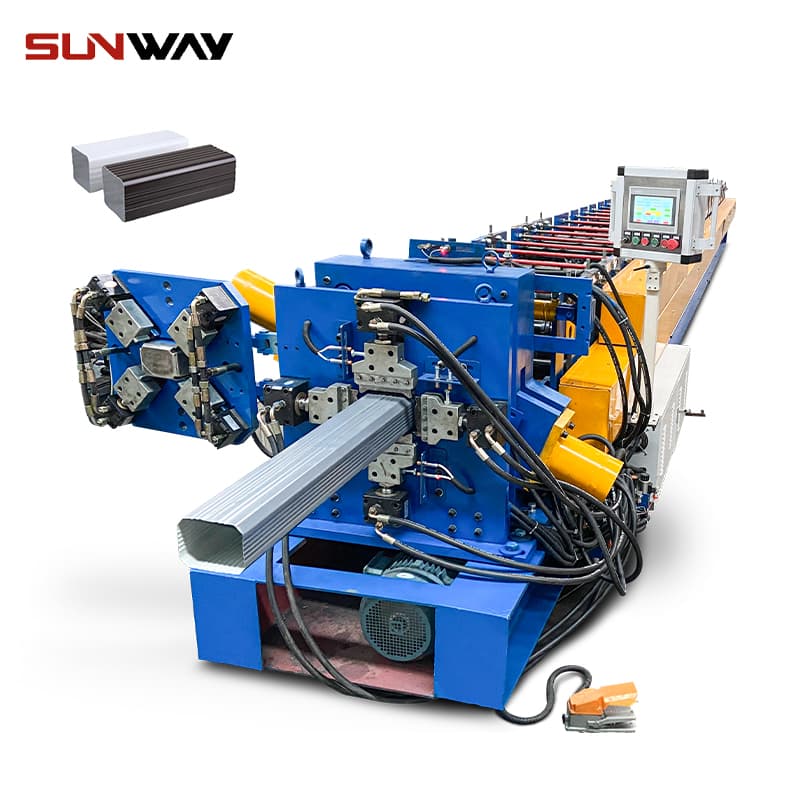
FAQ
| Question | Réponse |
|---|---|
| Quelle est l'épaisseur standard des tôles de couverture ? | L'épaisseur standard varie de 0,4 mm à 1,2 mm. |
| Les tôles de couverture peuvent-elles être personnalisées en termes de longueur ? | Oui, la plupart des plaques de toiture peuvent être personnalisées pour s'adapter à la longueur spécifique de votre projet. |
| Quel est le meilleur matériau pour les toitures industrielles ? | Les tôles ondulées sont préférées pour les applications industrielles en raison de leur résistance. |
| Les feuilles de toiture en plastique sont-elles durables ? | Bien que légères et abordables, les feuilles de plastique sont généralement moins durables que le métal. |
Conclusion
Comprendre la dimensions des tôles de toiture est essentielle pour choisir le bon matériau pour votre projet. Qu'il s'agisse de métal, de plastique ou de tout autre type de matériau, le fait de connaître l'épaisseur, la longueur et la largeur permet de garantir une installation correcte et une bonne durabilité. Qu'elles soient industrielles ou résidentielles, les tôles de toiture offrent des solutions polyvalentes qui répondent à un large éventail de besoins. Tenez compte des facteurs évoqués ici, du choix des matériaux à la comparaison des fournisseurs, afin de prendre la décision la plus éclairée pour votre projet de toiture.
